
Castle of the Winds is a tile-based roguelike video game for Microsoft Windows. It was developed by Rick Saada in 1989 and distributed by Epic MegaGames in 1993. The game was released around 1998 as a freeware download by the author. Though it is secondary to its hack and slash gameplay, Castle of the Winds has a plot loosely based on Norse mythology, told with setting changes, unique items, and occasional passages of text. The game is composed of two parts: A Question of Vengeance, released as shareware, and Lifthransir's Bane, sold commercially. A combined license for both parts was also sold.
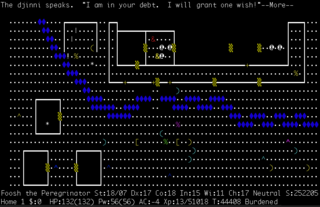
NetHack is an open source single-player roguelike video game, first released in 1987 and maintained by the NetHack DevTeam. The game is a fork of the 1982 game Hack, itself inspired by the 1980 game Rogue. The player takes the role of one of several pre-defined character classes to descend through multiple dungeon floors, fighting monsters and collecting treasure, to recover the "Amulet of Yendor" at the lowest floor and then escape.

Roguelike is a subgenre of role-playing computer games traditionally characterized by a dungeon crawl through procedurally generated levels, turn-based gameplay, grid-based movement, and permanent death of the player character. Most roguelikes are based on a high fantasy narrative, reflecting their influence from tabletop role playing games such as Dungeons & Dragons.
Ancient Domains of Mystery is a roguelike video game designed and developed by Thomas Biskup and released in 1994. The player's goal is to stop the forces of Chaos that invade the world of Ancardia. The game has been identified as one of the "major roguelikes" by John Harris.
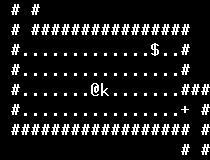
The Dungeons of Moria, usually referred to as simply Moria, is a computer game inspired by J. R. R. Tolkien's novel The Lord of the Rings. The objective of the game is to dive deep into the Mines of Moria and kill the Balrog. Moria, along with Hack (1984) and Larn (1986), is considered to be the first roguelike game, and the first to include a town level.

Rogue is a dungeon crawling video game by Michael Toy and Glenn Wichman with later contributions by Ken Arnold. Rogue was originally developed around 1980 for Unix-based minicomputer systems as a freely distributed executable. It was later included in the Berkeley Software Distribution 4.2 operating system (4.2BSD). Commercial ports of the game for a range of personal computers were made by Toy, Wichman, and Jon Lane under the company A.I. Design and financially supported by the Epyx software publishers. Additional ports to modern systems have been made since by other parties using the game's now-open source code.
Hack is a 1984 roguelike video game that introduced shops as gameplay elements and expanded available monsters, items, and spells. It later became the basis for NetHack.
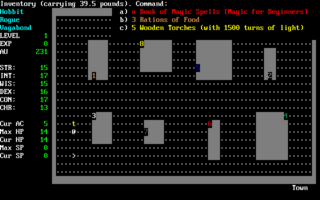
Angband is a dungeon-crawling roguelike video game derived from Umoria. It is based on the writings of J. R. R. Tolkien, in which Angband is the fortress of Morgoth. The current version of Angband is available for all major operating systems, including Unix, Windows, Mac OS X, and Android. It is identified as one of the "major roguelikes" by John Harris. Angband is free and open source game under the GNU GPLv2 or the angband license

Hack and slash, also known as hack and slay or slash 'em up, refers to a type of gameplay that emphasizes combat with melee-based weapons. They may also feature projectile-based weapons as well as secondary weapons. It is a sub-genre of beat 'em up games, which focuses on melee combat, usually with swords. Hack-and-slash action games are sometimes known as character action games.
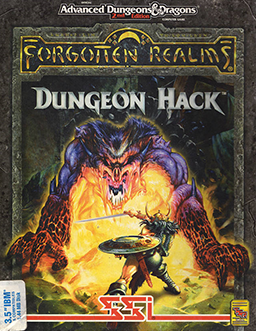
Dungeon Hack is a 1993 role-playing video game developed by DreamForge Intertainment and published by Strategic Simulations for DOS and NEC PC-9801.
Larn is a roguelike computer game written by Noah Morgan in 1986 for the UNIX operating system. Morgan's original version of Larn remains part of the NetBSD games collection.
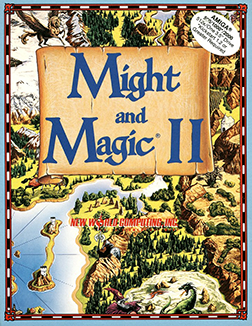
Might and Magic II: Gates to Another World is a role-playing video game developed and published by New World Computing in 1988. It is the sequel to Might and Magic Book One: The Secret of the Inner Sanctum.
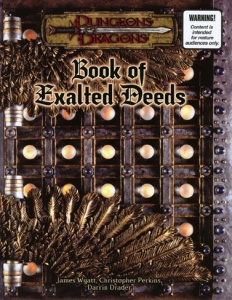
The Book of Exalted Deeds is an optional sourcebook for the 3.0 edition of the Dungeons & Dragons role-playing game published by Wizards of the Coast (WotC) in 2003. It provides supplementary game material for campaigns involving characters of good alignment. Within the game, there is also a powerful magical artifact of the same name.
Mystery Dungeon, known in Japan as Fushigi no Dungeon, is a series of roguelike role-playing video games. Most were developed by Chunsoft, now Spike Chunsoft since the merging in 2012, and select games were developed by other companies with Chunsoft's permission. The series began when co–creator of Dragon Quest, Koichi Nakamura, was inspired by Seiichiro Nagahata's experience with Rogue, who is also a fellow developer from the company, and a desire to create an original series. It began on the Super Famicom, progressing to almost all of Nintendo's and Sony's home and handheld consoles, WonderSwan, Dreamcast, Windows, and mobile devices.

Dungeon Crawl Stone Soup (DCSS) is a free and open source roguelike computer game and the community-developed successor to the 1997 roguelike game Linley's Dungeon Crawl, originally programmed by Linley Henzell. It has been identified as one of the "major roguelikes" by John Harris.
Egoboo is a 3D open source dungeon crawling action role-playing game with support for Windows XP, Windows Vista, Linux, Mac OS X, and some earlier versions of Windows. Egoboo has been downloaded over 590,000 times since its first release over SourceForge alone until mid 2016, while Egoboo can be downloaded from other sources as well.

Falcon's Eye is a version of the roguelike computer game NetHack which introduces isometric graphics and mouse control. Falcon's Eye has been praised for improving NetHack's visuals and audio to an almost commercial level and has been noted by Linux Journal as among the best free games available. After development stalled in 2001, the game was continued as Vulture's Eye and later Vulture for Nethack.
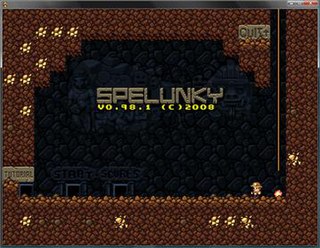
Spelunky is a 2008 source-available 2D platform game created by independent developer Derek Yu and released as freeware for Microsoft Windows. It was remade for the Xbox 360 in 2012, with ports of the new version following for various platforms, including back to Microsoft Windows. The player controls a spelunker who explores a series of caves while collecting treasure, saving damsels, fighting enemies, and dodging traps. The caves are procedurally generated, making each run-through of the game unique.

Fate: Undiscovered Realms is an action role-playing roguelike video game developed by WildTangent and released on July 17, 2008, as a stand-alone expansion to the 2005 PC game Fate. The retail version sold in stores includes the original game as well. It was followed by a second expansion, Fate: The Traitor Soul, in 2009.
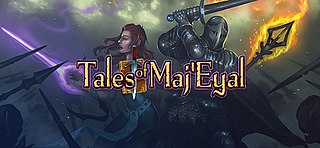
Tales of Maj'Eyal is an open-source roguelike video game released for Microsoft Windows, Mac OS X, and Linux in 2012. Tales of Maj'Eyal is available as donation-supported freeware (donationware) from the developers; donations grant some exclusive online features as part of a freemium model. The game may also be purchased through the digital distribution outlets Steam or GOG. The game's TE4 game engine source code is under a GNU GPLv3 license, while the game's assets are licensed for use "with the Tales of Maj'Eyal game only".














